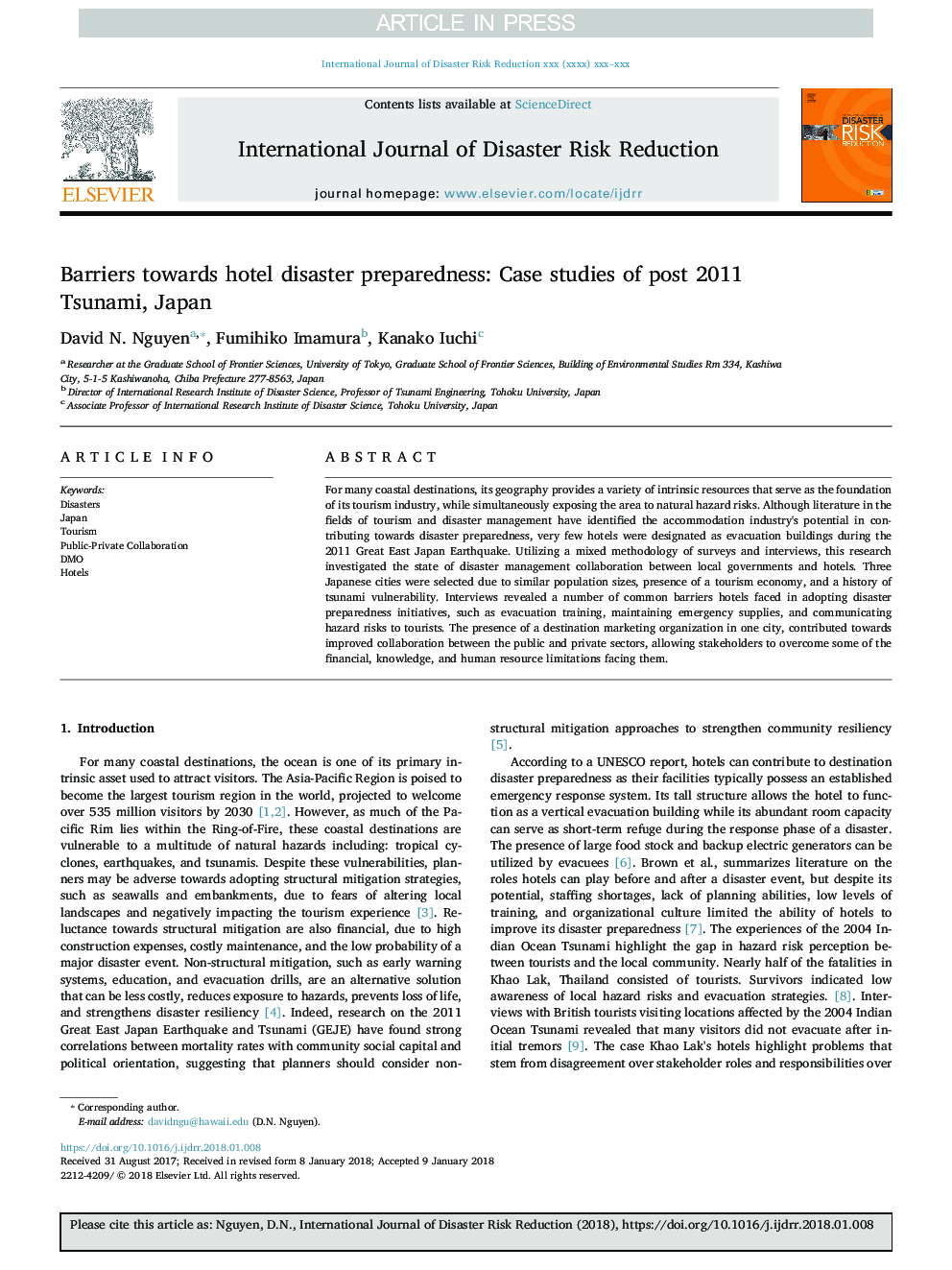| Article ID | Journal | Published Year | Pages | File Type |
|---|---|---|---|---|
| 7471712 | International Journal of Disaster Risk Reduction | 2018 | 10 Pages |
Abstract
For many coastal destinations, its geography provides a variety of intrinsic resources that serve as the foundation of its tourism industry, while simultaneously exposing the area to natural hazard risks. Although literature in the fields of tourism and disaster management have identified the accommodation industry's potential in contributing towards disaster preparedness, very few hotels were designated as evacuation buildings during the 2011 Great East Japan Earthquake. Utilizing a mixed methodology of surveys and interviews, this research investigated the state of disaster management collaboration between local governments and hotels. Three Japanese cities were selected due to similar population sizes, presence of a tourism economy, and a history of tsunami vulnerability. Interviews revealed a number of common barriers hotels faced in adopting disaster preparedness initiatives, such as evacuation training, maintaining emergency supplies, and communicating hazard risks to tourists. The presence of a destination marketing organization in one city, contributed towards improved collaboration between the public and private sectors, allowing stakeholders to overcome some of the financial, knowledge, and human resource limitations facing them.
Related Topics
Physical Sciences and Engineering
Earth and Planetary Sciences
Geophysics
Authors
David N. Nguyen, Fumihiko Imamura, Kanako Iuchi,
